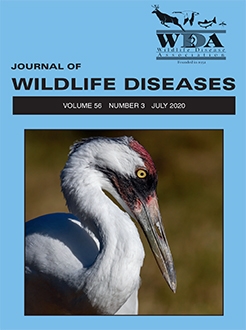Emerging pathogens may pose additional threats to already vulnerable populations of chelonians, such as gopher tortoises (Gopherus polyphemus). In response to a mortality event on a translocation site in northwest Florida, US during 2013–15, 13 gopher tortoises were necropsied and their tissues were screened for 12 pathogens, including Mycoplasma agassizii, Mycoplasma testudineum, and Frog virus 3–like ranavirus (FV3). The DNA of FV3 was detected via quantitative PCR in the gastrointestinal tract of three tortoises. Subsequently, pathogen surveillance was performed on whole blood and oral–cloacal swab samples of live translocated tortoises from two different enclosures within the site (n=68), rehabilitated tortoises from the site (n=18), and tortoises prior to release on site (n=35) during 2015–17. Mycoplasma spp. were present in all groups and years of live tortoises tested. The DNA of FV3 was detected in 15 individuals both with and without clinical signs of disease in 2016. We recaptured 20 tortoises and captured an additional 20 tortoises in 2017 for surveillance, yet FV3 DNA was no longer detected, even in those that had previously tested positive (n=7). The results of this study contribute to the epidemiology of ranavirus in chelonians and suggests that gopher tortoises could be reservoirs for FV3. We recommend that the status of Ranavirus infection should be included for health screens for gopher tortoises in translocation programs.
How to translate text using browser tools
2 July 2020
Pathogen Surveillance and Detection of Ranavirus (Frog virus 3) in Translocated Gopher Tortoises (Gopherus polyphemus)
Rebecca A. Cozad,
Terry M. Norton,
Matthew J. Aresco,
Matthew C. Allender,
Sonia M. Hernandez
ACCESS THE FULL ARTICLE

Journal of Wildlife Diseases
Vol. 56 • No. 3
July 2020
Vol. 56 • No. 3
July 2020
Emerging infections
Mycoplasma agassizii
Mycoplasma testudineum
translocation




